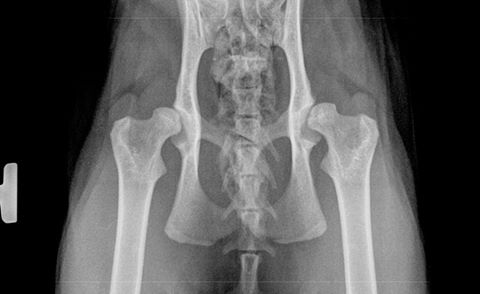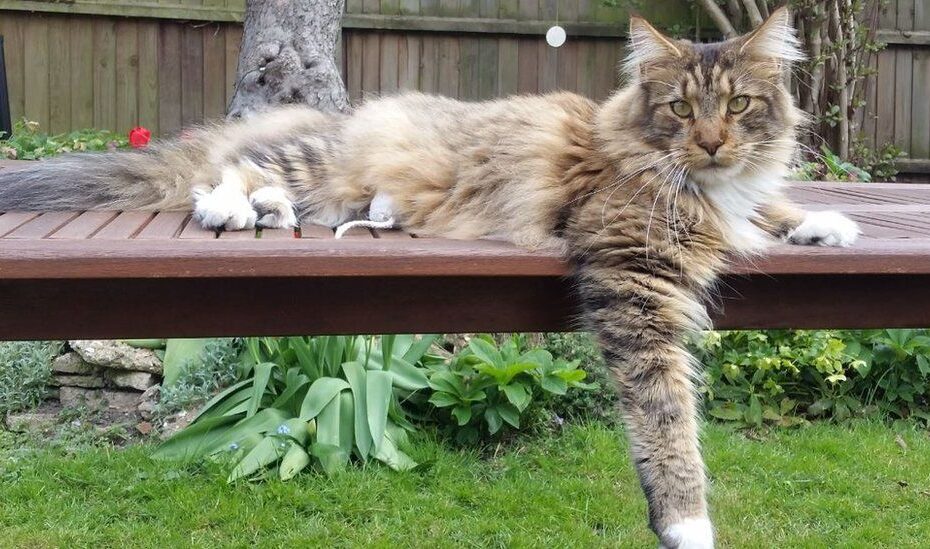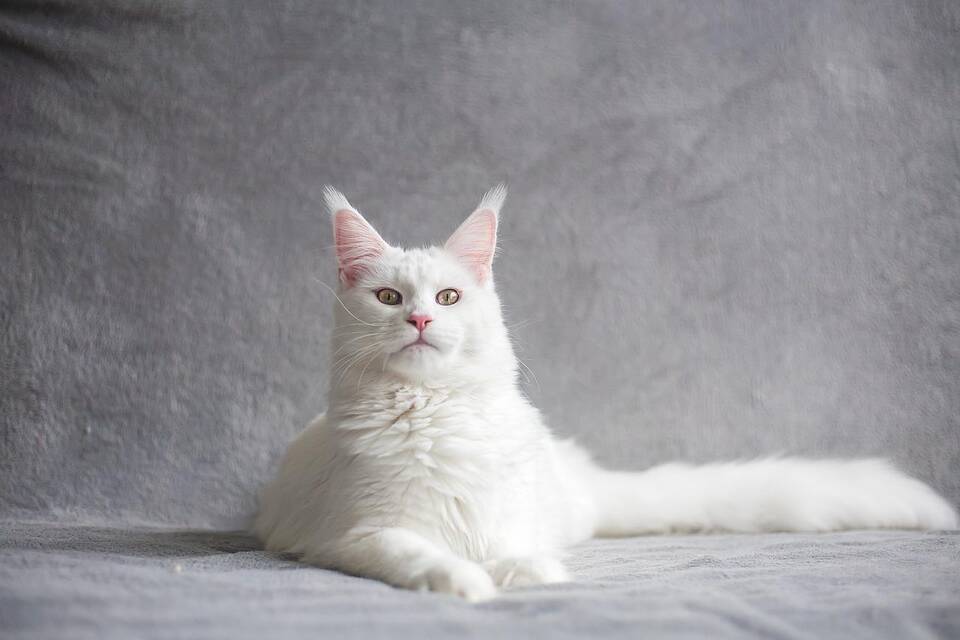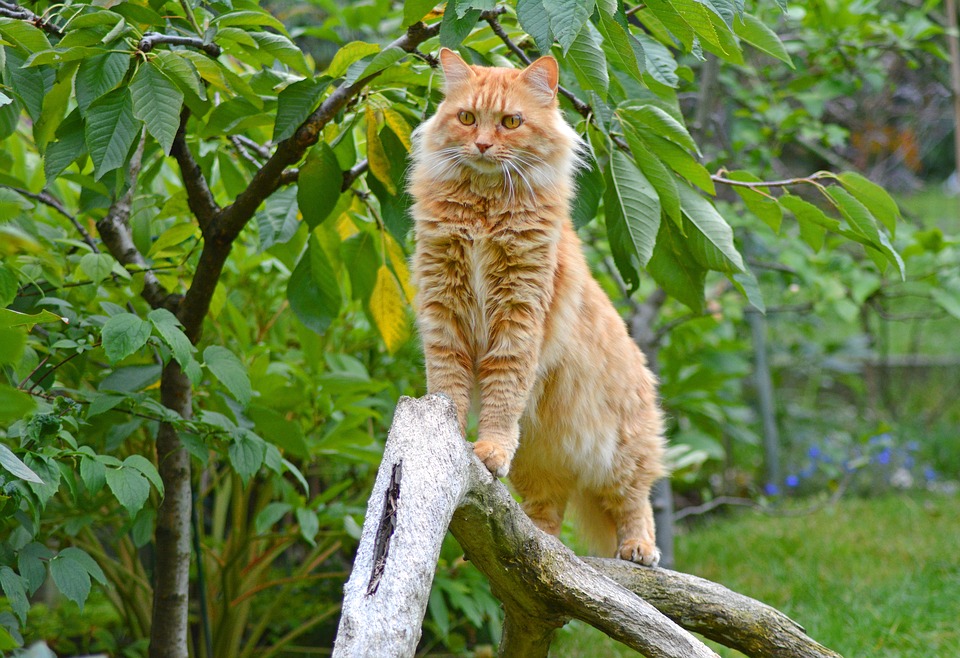Maine Coon cats are a popular breed of cat known for their big size and long hair. As with all breeds of cats, Maine Coons can be prone to health problems. One of the most common health problems seen in Maine Coons is hip dysplasia. If your Maine Coon is showing signs of hip dysplasia, there are steps you can take to help manage the condition.
Keep reading to learn more about hip dysplasia in Maine Coon cats and what you can do to help your furry friend live a happy, healthy life.
What Is Maine Coon Hip Dysplasia?
Hip dysplasia is a condition that affects the hip joints in cats. It can cause pain and lameness in the hind legs and can lead to arthritis later in life. Maine Coon cats are in fact genetically predisposed to hip dysplasia. If your Maine Coon is showing signs of hip dysplasia, there are steps you can take to help manage the condition. You may need to make some changes to your cat’s diet and exercise routine, and you may also need to provide them with supplements or medication!
Causes Of Maine Coon Dysplasia
Feline hip dysplasia is a condition that is caused by a malformation of the hip socket. This condition can lead to arthritis and lameness in the cat.
This condition has an autosomal dominant mode of inheritance; which means that if a cat receives one good copy of the gene and one defective copy, it will be affected by this disorder.
Other factors like age, sex and abnormal development before birth could predispose your cat to develop hip dysplasia later in life.
Hip Dysplasia Symptoms In Maine Coon Cats
Maine Coon cats are susceptible to developing hip dysplasia. In fact, according to experts, it’s an inherited disease in Maine Coons. And could be due to a narrower gene pool.
Check out our article if you’re interested in reading more about other diseases that are common in Maine Coon cats.
If you suspect there may be something wrong with your cat’s joints, look out for these symptoms below.
Unstable Gait And Stance
One of the most common symptoms of hip dysplasia in Maine Coon cats is a change in their normal gait and stance.
Cats with hip dysplasia will often adopt a crouched or “bowlegged” stance and may have difficulty walking or running.
This is because the dysplastic hip joint is not as stable as it should be, which can cause the cat to wobble or fall.
Difficulty Standing Up
Cats with hip dysplasia often have difficulty standing up.
This is because their muscles and ligaments are not as strong as they should be, which makes it difficult for them to support their weight.
When they try to stand up, they often wobble and fall over.
Lack Of Movement
There are a few reasons why cats with hip dysplasia have decreased movement.
One reason is that the dysplastic hip joint is not as stable as a normal hip joint, so the cat has to use more energy to move around.
Additionally, the cat’s limited mobility is likely caused by weak or inactive muscles around the hip joint.
Loss In Muscle Mass
One of the reasons that cats with hip dysplasia lose muscle mass is because they have difficulty getting around.
This means that they are not as active as they should be, which leads to a loss in muscle mass.
Additionally, the muscles and ligaments around the hips are not as strong as they should be, which makes it difficult for the cat to support its weight.
Agitation Or Aggression
Some Maine Coon cats with hip dysplasia may become agitated or aggressive. It is important to note that this is not a universal symptom, and not all cats will exhibit it.
Additionally, it’s important to note that cats hide pain to avoid being vulnerable or seen as weak. They’re also very good at hiding it because they’ve evolved to do so over thousands of years.
In the wild, if a cat showed any sort of weakness, it could be attacked by another animal and killed.
So, cats have learned to mask any sign of illness or injury in order to stay alive and protect themselves.
This can make it awkward at times to tell if your cat has issues with its hip.
How To Treat Hip Dysplasia In Cats
There are a number of treatments that are available for cats with hip dysplasia. Some of these treatments include:
- Surgery: This is often the best option for cats with hip dysplasia, as it can help to restore the function of their hips.
- Medication: There are a number of medications that can be prescribed to cats with hip dysplasia in order to help relieve the pain and inflammation that they are experiencing.
- Physical Therapy: Physical therapy can help to improve the strength and mobility of cats with hip dysplasia.
- Weight Management: If your cat is overweight, then losing weight can help to decrease the stress that is placed on the hips and joints.
How Much Does Hip Dysplasia Surgery Cost?
The cost of surgery for cats with hip dysplasia can vary depending on a number of factors, such as the location of the surgery and the type of surgery that is performed.
However, the average cost of hip dysplasia surgery for a cat is between $1,500 to $3000 depending on the type of surgery with hip replacement being the most expensive.
There are 4 main types of surgery available listed below:

1. Juvenile Pubic Symphysiodesis
Juvenile Pubic Symphysiodesis (JPS) is a surgical procedure performed on kittens to correct a congenital abnormality of the pubic symphysis.
In JPS, the bones of the pubic symphysis are fused together so that they grow together as a single unit. This prevents the bones from separating as the kitten grows and results in a more stable joint.
2. Triple Pelvic Osteotomy
Triple pelvic osteotomy is a surgery that is used to treat certain conditions in cats.
The surgery involves the removal of three bones from the pelvis and is used to correct problems such as hip dysplasia or arthritis.
3. Femoral Head And Neck Incision
The femoral head and neck incision is a surgical procedure used to treat certain types of hip dysplasia in cats.
The surgery involves making an incision in the femoral neck, the bone that connects the femur (thighbone) to the pelvis.
This allows access to the hip joint, where the dysplastic bones can be corrected or replaced.
4. Micro Total Hip Replacement
A hip replacement in a cat is a surgical procedure that is used to replace the natural hip joint with an artificial one.
This is a treatment option for cats that are suffering from arthritis or other degenerative joint diseases.
Never Leave Hip Dysplasia Untreated
If left untreated, hip dysplasia can cause significant pain and lameness in cats.
In some cases, the condition can lead to arthritis and a loss of mobility.
Early diagnosis and treatment are key to preventing these long-term issues.
So if you have any doubts, take your Maine Coon to the vet to get diagnosed as soon as possible.
Tips To Help A Cat With Hip Dysplasia
If your cat has hip dysplasia, there are a few things you can do to help make them more comfortable.
Below, we go through some possible ways you can achieve this.
1. Prevent Obesity
Maintaining a healthy weight is important for cats with hip dysplasia because they are more likely to suffer from obesity.
Obesity can aggravate the symptoms of hip dysplasia and make it harder for a cat to recover from surgery.
A healthy diet and regular exercise are essential for helping cats with hip dysplasia stay healthy and comfortable.
2. Pain Relievers
Pain management can help cats with hip dysplasia in a few ways. First, it can help to reduce inflammation and pain.
Second, it can help to improve mobility and range of motion.
Third, it can help to increase the cat’s overall quality of life.
Also, there are several types of pain relievers available for cats with Hip Dysplasia, but it’s important to speak to your veterinarian about which medication is the right choice in your cat’s specific case.
3. Change Exercise
Maine Coon cats with hip dysplasia find it difficult to exercise as it puts pressure on their joints and can actually cause pain.
This is a double whammy for Maine Coons because they are very active and playful cats that often remain kitten-like even into older age.
This means you’ll have to rethink your cat’s exercise routine and get a bit creative.
A great start is to try playing with your cat using a fishing pole toy. This will help keep their movements slow and easy.
Just remember that exercise is very important in the treatment of hip dysplasia. It helps to strengthen the muscles around the joints. Try out these low-impact exercises below.
4. Low Impact Exercise
Low-impact exercises are a good way for cats with hip dysplasia to get some exercise.
These exercises are gentle on the joints and can help keep the muscles around the hip joint strong.
This can help improve mobility and reduce pain.
Some good low impact exercises for a cat with hip dysplasia include playing with a fishing pole toy, slowly moving around the house, and taking short walks outside on a leash.
Don’t forget Maine Coons love water. So a great way to manage their hip dysplasia is to take them for a swim.
Swimming is probably the best low-impact exercise you can do with a Maine Coon cat. In fact, its zero impact.
5. Keep Everything On Their Level
Cats with hip dysplasia have difficulty jumping and climbing, which can make life difficult for them.
You should try to find ways of making your cat’s living space easier on the joints by placing beds or toys low so they’re not too high up in order to avoid stressing out those paws!
The same is true when it comes to food and drinking bowls.
6. Ramps & Stairs
There are a few ways that a ramp can help a cat with hip dysplasia.
First, a ramp can provide easier access to elevated surfaces, like beds and sofas.
Second, they can help cats with hip dysplasia move around more easily.
Finally, ramps can be used to slowly increase the intensity of the cats’ exercise routine.
A small stair or a step also helps in the same way. Anything that can make it easier for your cat to reach elevated surfaces and take the pressure off their joints helps a ton
Feline Hip Dysplasia Prevention
There is no way to prevent hip dysplasia in cats. However, there are signs you can look out for to spot hip dysplasia in its early stages.
According to Cornell Feline Health Center. Some of these signs include:
Difficulty Moving: Normal cats will spend most of their time moving around and playing. If you notice that your cat is having difficulty jumping or climbing furniture, like normal, then it may be a sign of hip dysplasia.
Clear expression of pain: When you touch your cat’s hip area they show obvious pain and distress. They may also express pain when landing from a height.
Persistent chewing or licking of the hip area: If you notice your Maine Coon licking its hip a lot more than usual, it may be a sign of hip dysplasia.
If you notice these symptoms, the next step is to contact your vet and tell them your concerns. The vet will perform an X-ray on the hip to determine the issue.

How Long Does A Cat With Hip Dysplasia Live For?
The average life expectancy of a cat with hip dysplasia is a normal one.
Most Maine Coons live for 12 to 15 years so as long as your cat is diagnosed with hip dysplasia early on and has surgery to correct it. They will most certainly live normal lives.
Of course, using the tips above to help your cat live an easier life will also contribute to them living a normal life span.
Conclusion
To conclude, Maine Coon hip dysplasia is a condition that affects the hips of Maine Coon cats. It can lead to arthritis and other problems in later life.
-There is no known cure for Maine Coon hip dysplasia, but there are treatments available that can help to manage the condition.
-Maine Coon hip dysplasia is thought to be genetic in nature, and affected cats should not be bred.
-The best way to protect your Maine Coon cat from developing hip Dysplasia is to have them screened by a vet at an early age. Early detection allows for treatment to begin as soon as possible.
We hope this article helped you get a better understanding of Maine Coon hip dysplasia. If so make sure to give it a share to help educate more people.
Elliot is the owner and lead writer at Lais Lairs. He is the proud owner of a Maine Coon/Siberian Mix cat named Lai. His oldest cat lived to be 18 years old so he’s learned a thing or two about keeping pets. When he’s not writing you can find him playing video games or playing fetch with Lai.



